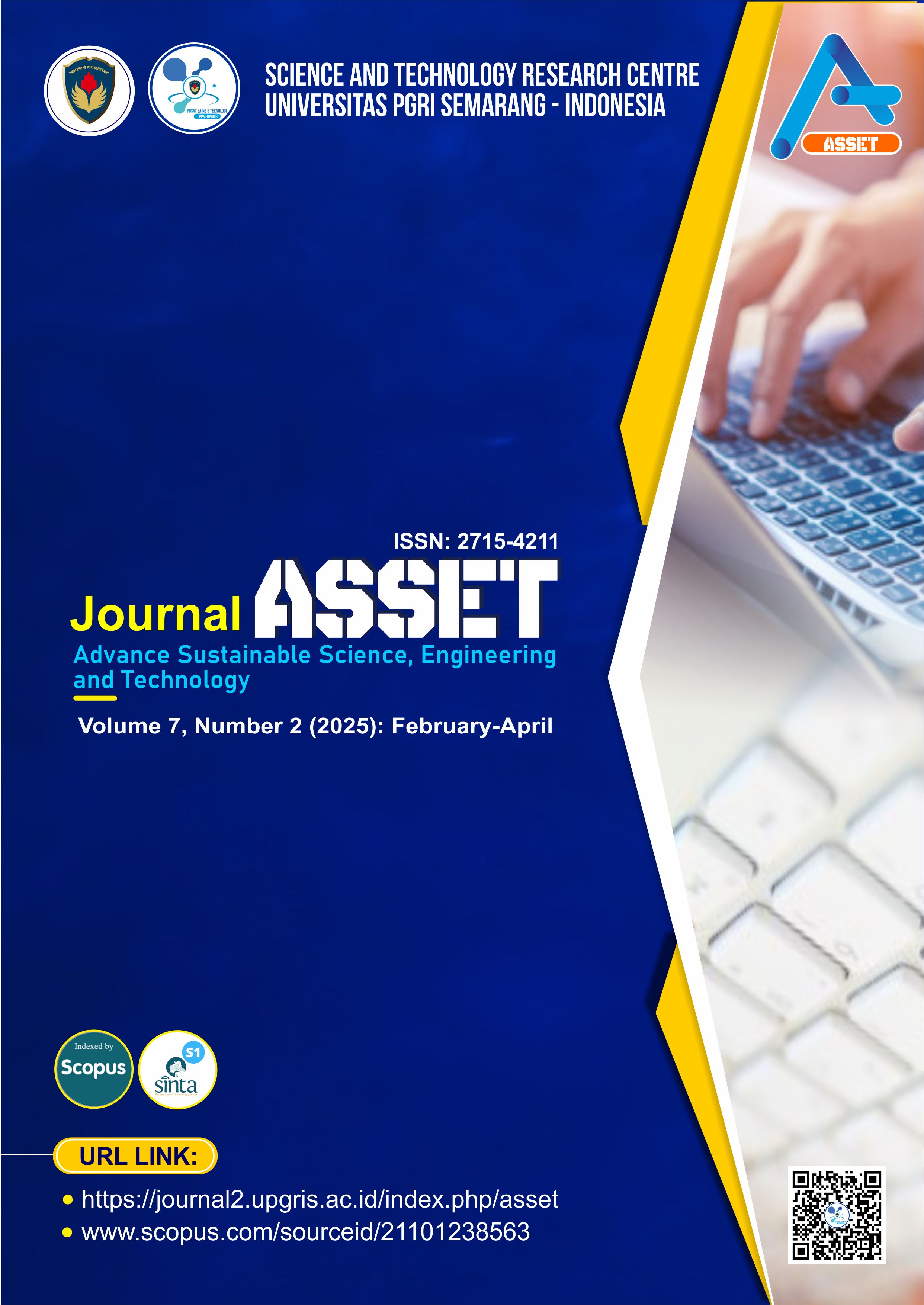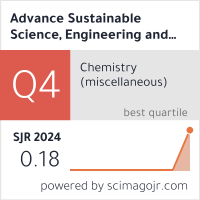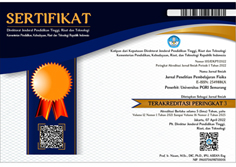Analysis of Modified Exhaust Tip Geometry on Flow Behavior and Backpressure in Car Exhaust Systems for Electricity Harvesting
DOI:
https://doi.org/10.26877/2dw2wx35Keywords:
Back Pressure , Energy Harvesting, Exhaust Backpressure, Exhaust system, Solidwork Flow SimulationAbstract
The efficiency of vehicle exhaust systems is critical for reducing backpressure and emissions, enhancing performance and sustainability of harvesting energy. This study investigates the effect of an additional body modification at the exhaust tip on pressure and velocity distributions using Computational Fluid Dynamics (CFD) simulations in SolidWorks. Simulations were conducted at inlet velocities of 10, 15, and 20 m/s. Results show that the modified design does not increase backpressure, with the maximum observed change being a minor reduction of 0.137% at 20 m/s. These findings confirm that the additional body can be safely integrated without adversely affecting engine performance, while also improving downstream flow uniformity. This supports its viability for use in energy harvesting systems and highlights its relevance for sustainable exhaust system development.
References
[1] Ö. CİHAN and M. BULUT, “CFD Analysis of Exhaust Manifold for Different Designs,” Eur. Mech. Sci., vol. 3, no. 4, pp. 147–152, 2019, doi: 10.26701/ems.572272.
[2] S. Baruah and S. Chatterjee, “CFD analysis on an elliptical chamber muffler of a C.I. Engine,” Int. J. Heat Technol., vol. 37, no. 2, pp. 613–619, 2019, doi: 10.18280/ijht.370232.
[3] S. Rajoo, A. Romagnoli, R. Martinez-Botas, A. Pesiridis, C. Copeland, and A. M. I. Bin Mamat, “Automotive exhaust power and waste heat recovery technologies,” Automot. Exhaust Emiss. Energy Recover., no. January, pp. 265–281, 2014.
[4] P. Manikandan, A. S. Durai, S. S. Kumar, R. Selva Kumar, and M. Navaneetha Krishnan, “CFD Analysis of Exhaust Manifold,” South Asian J. Eng. Technol, pp. 257–261, 2017.
[5] R. Murali et al., “Design optimization of exhaust manifold’s bending radius for Spark Ignition (SI) engine whrough CFD analysis on low end RPM 8sing Taguchi’s method,” AIP Conference Proceedings, vol. 2339. 2021, doi: 10.1063/5.0048418.
[6] A. Katre and J. A. Hole, “Experimental Analysis of Backpressure in Exhaust Muffler of Single Cylinder Diesel Engine using CFD,” IJRASET (International J. Res. Appl. Sci. Eng. Technol., vol. 5, no. X, pp. 2167–2170, 2017.
[7] V. Navadagi and S. Sangamad, “CFD Analysis of Exhaust Manifold of Multi- Cylinder Petrol Engine for Optimal Geometry to Reduce Back Pressure,” Int. J. Eng. Res. Technol., vol. 3, no. 3, pp. 92–97, 2014.
[8] K. Bajpai, A. Chandrakar, A. Agrawal, and S. Shekhar, “CFD Analysis of Exhaust Manifold of SI Engine and Comparison of Back Pressure using Alternative Fuels,” IOSR J. Mech. Civ. Eng., vol. 14, no. 01, pp. 23–29, 2017, doi: 10.9790/1684-1401012329.
[9] M. S. Imran and H. T. Hashim, “A Heat Recovery Method of Internal Combustion Engine Using a Thermoelectric Generator,” IOP Conf. Ser. Mater. Sci. Eng., vol. 671, no. 1, 2020, doi: 10.1088/1757-899X/671/1/012134.
[10] G. S. Wahile, P. D. Malwe, and A. V. Kolhe, “Waste heat recovery from exhaust gas of an engine by using a phase change material,” Mater. Today Proc., vol. 28, no. xxxx, pp. 2101–2107, 2020, doi: 10.1016/j.matpr.2020.03.247.
[11] F. M. Hardi, “Analisis Aliran Gas Buang Mekanisme Exhaust Energy Harvester Electric Turbo Compounding (ETC),” Universitas Negeri Padang, 2021.
[12] A. K. Yadav, “Energy Generation from Exhaust Heat: Technologies and Innovations,” Int. J. Res. Appl. Sci. Eng. Technol., vol. 12, no. 7, pp. 854–859, 2024, doi: 10.22214/ijraset.2024.63654.
[13] R. Marian Bleotu and C. Preda, “Harnessing Heat From Vehicle Exhaust for Automobile Application,” SCIENDO, vol. 70, no. 1, 2024, doi: 10.2478/bipcm-2024-0001.
[14] K. Talib, S. G. Herawan, M. M. Tahir, A. Putra, and S. A. Shamsudin, “Study on waste heat recovery from exhaust gas spark ignition (S.I.) engine using steam turbine mechanism,” MATEC Web Conf., vol. 90, pp. 1–10, 2016, doi: 10.1051/matecconf/20179001057.
[15] F. Madaro et al., “Available energy in cars’ exhaust system for IoT remote exhaust gas sensor and piezoelectric harvesting,” Energies, vol. 13, no. 6, 2020, doi: 10.3390/en13164169.
[16] Y. S. Putra, “Analisis Bodi Tambahan pada Sisi Alternator Turbin Angin pada Bodi Knalpot Sepeda Motor Terhadap Tegangan dan Arus Listrik yang Dihasilkan,” Universitas Negeri Padang, 2023.
[17] I. S. Kang and S. M. Yang, “The Effect of Back Pressure Change on Exhaust Emissions According to the Confluence Geometry of a Dual Exhaust System in Idling,” Appl. Sci., vol. 12, no. 4, 2022, doi: 10.3390/app12041855.
[18] R. Murali et al., “A review on the correlation between exhaust backpressure and the performance of IC engine,” J. Phys. Conf. Ser., vol. 2051, no. 1, pp. 0–6, 2021, doi: 10.1088/1742-6596/2051/1/012044.
[19] R. Bhandari, P. Joshi, A. Ghimire, and A. Tamrakar, “Study and Optimization of Muffler to Reduce Back Pressure of Exhaust System,” SSRN Electron. J., pp. 1–6, 2023, doi: 10.2139/ssrn.4615719.
[20] Y. Gülmez and G. Özmen, “Effects of Exhaust Backpressure Increment on the Performance and Exhaust Emissions of a Single Cylinder Diesel Engine,” J. Eta Marit. Sci., vol. 9, no. 3, pp. 177–191, 2021, doi: 10.4274/jems.2021.25582.
[21] J. Xu and S. Zhou, “Analysis of Flow Field for Automotive Exhaust System Based on Computational Fluid Dynamics,” Open Mech. Eng. J., vol. 8, pp. 587–593, 2014.
[22] P. Xu, H. Jiang, and X. Zhao, “CFD analysis of a gasoline engine exhaust pipe,” Int. J. Simul. Syst. Sci. Technol., vol. 17, no. 20, pp. 7.1-7.7, 2016, doi: 10.5013/IJSSST.a.17.20.07.
[23] F. Ahmad et al., “Sustainable Strengthening of Concrete Using Lathe Waste Steel Fibers : Experimental and FEA Analysis,” Adv. Sustain. Sci. Eng. Technol., vol. 7, no. 2, pp. 21–31, 2025.
[24] A. R. Suharso, A. Hendartono, and S. Supriyadi, “Characteristics of the MQ-135 Sensor for Testing Medium Speed Ship Engine Exhaust Gases,” Adv. Sustain. Sci. Eng. Technol., vol. 6, no. 3, p. 0240310, 2024, doi: 10.26877/asset.v6i3.615.
[25] P. Chanda Nagarajan, H. Ström, and J. Sjöblom, “Transient Flow Uniformity Evolution in Realistic Exhaust Gas Aftertreatment Systems Using 3D-CFD,” Emiss. Control Sci. Technol., vol. 8, no. 3–4, pp. 154–170, 2022, doi: 10.1007/s40825-022-00217-6.
[26] M. Akhil Teja, K. Ayyappa, S. Katam, and P. Anusha, “Analysis of Exhaust Manifold using Computational Fluid Dynamics,” Fluid Mech. Open Access, vol. 03, no. 01, pp. 1–16, 2016, doi: 10.4172/2476-2296.1000129.
[27] S. M. Letchumanan, A. M. T. Arifin, I. Taib, and N. A. N. Salim, “Computational Fluid Dynamic Analysis on Carbon Fibre Reinforced Polymer Wrapped on Defected Oil and Gas Piping System Using Solidwork Flow Simulation,” J. Adv. Res. Fluid Mech. Therm. Sci., vol. 101, no. 2, pp. 197–210, 2023, doi: https://dx.doi.org/10.37934/arfmts.101.2.197210.
[28] Maretha Unique Reinauli Turangan, “Numerical Simulation of the Effect of Flow Velocity and Inlet Position on the Pressure Drop in the Exhaust Manifold,” Indones. J. Marit. Technol., vol. 1, no. 1, 2023, doi: 10.35718/ismatech.v1i1.891.











